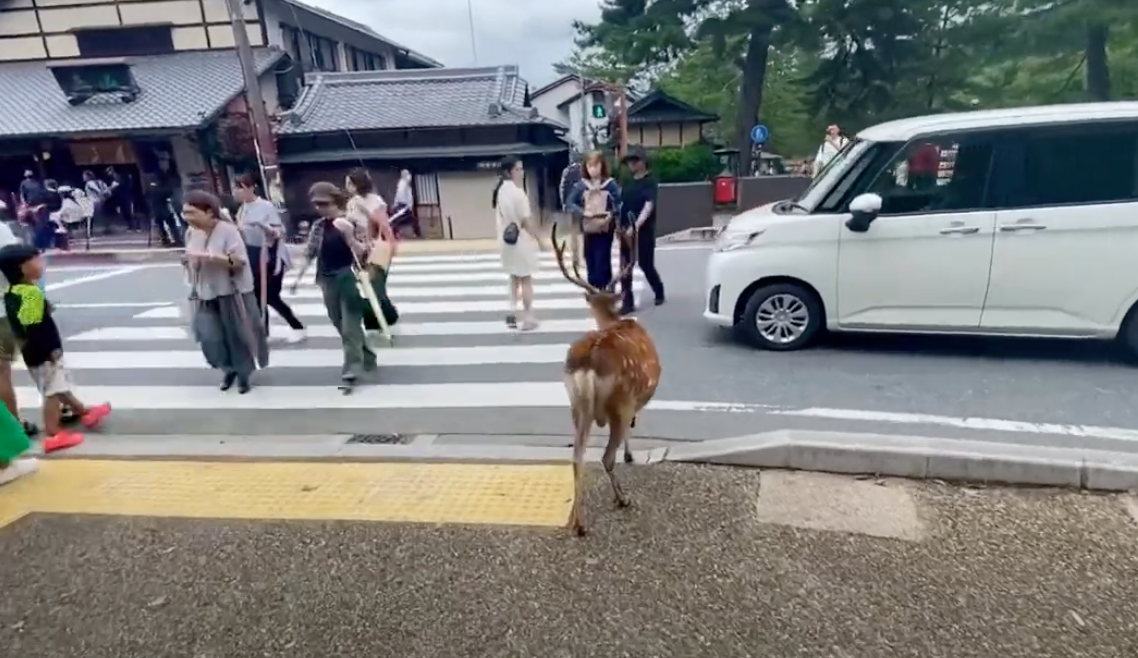Our Japanese adventure had already taken us down from the vibrant energy of Nagoya and through the bustling streets of Osaka for a few memorable days. While I’d certainly heard whispers of Nara and its famed deer, it hadn’t initially made our tight itinerary, curated by a travel companion as we journeyed south from Tokyo. Yet, as we navigated Osaka, persistent signs and intriguing advertisements for this “deer park” began to capture our collective imagination. Little did we know then that the reality of Nara would far exceed this simple moniker.
Opting for an early start from our Osaka hotel, we made our way to Osaka Station. From there, a comfortable and rather scenic train ride of approximately 45-50 minutes (costing around ¥810-¥900 per person on the JR Yamatoji Line or Kintetsu Nara Line) whisked us over the ranges and into Nara. Upon disembarking at either JR Nara Station or Kintetsu Nara Station, it’s a relatively short walk – perhaps 10-20 minutes (around 1-1.5km) depending on your pace and which station – before your first, truly captivating encounter. For an animal lover, the sight is instant and impactful: the deer are, quite simply, everywhere. They roam freely on the roads, occasionally even survey their domain from atop unattended tables – the city feels almost governed by these thousands of graceful sika deer.
As you meander towards the main park area, it’s easy to become so engrossed by these creatures, many of whom perform a charming “bow” in anticipation of a (separately purchased) deer cracker, that you almost forget to look up and absorb the meticulously manicured gardens that form their domain. Reaching a pedestrian crossing, it was a delightful surprise to find the deer calmly waiting and crossing with us – a truly novel experience for someone hailing from a country largely devoid of wild deer in urban settings.
Nara Park (奈良公園, Nara Kōen) itself is a sprawling public space at the foot of Mount Wakakusa, officially established way back in 1880, making it one of Japan’s oldest public parks. While its designated area is around 502 hectares (1,240 acres), the broader expanse encompassing iconic sites like Tōdai-ji Temple, Kōfuku-ji Temple, and Kasuga Grand Shrine, along with the Nara National Museum, effectively stretches to an impressive 660 hectares (1,600 acres). The park’s over 1,200 wild sika deer are not just residents but designated Natural Treasures, adding to the unique allure of this historically rich landscape.
While the deer were the initial drawcard, I want to emphasize that Nara offers so much more than just a “park.” The town itself is strikingly beautiful and was home to what became one of our most cherished encounters in all of Japan: the magnificent Tōdai-ji Temple. As somewhat naive, meandering tourists, we felt a touch foolish in hindsight for not fully appreciating beforehand that Nara was not merely a city of deer, but also the custodian of such profound historical and cultural treasures.
Tōdai-ji’s Great Buddha Hall (大仏殿 Daibutsuden) is an experience in itself, housing the world’s largest bronze statue of the Buddha Vairocana, known in Japanese as Daibutsu (大仏). The approach to this hall is a grand affair – a pathway stretching nearly 500-750 meters, lined with breathtaking Japanese architecture, historical markers, and yes, plenty more deer adding to the almost surreal atmosphere. Despite its status as a UNESCO World Heritage site and the sheer grandeur of its scale, our visit felt remarkably calming and wasn’t overly crowded, allowing us to truly soak in the awe-inspiring beauty.
Historically, Tōdai-ji was founded around 738 CE and officially opened in 752 CE. It has, understandably, undergone several reconstructions, with a major rebuild of the Great Buddha Hall completed in 1709. This colossal wooden structure, even in its current iteration (which is about two-thirds the size of the original), remains one of the largest wooden buildings in the world. The temple complex also serves as the Japanese headquarters of the Kegon school of Buddhism and is a cornerstone of the “Historic Monuments of Ancient Nara” UNESCO listing.
The surrounding gardens and the gentle slope of the hillside around Tōdai-ji offer splendid viewing points over Nara. For those willing to venture a little further up the hill, a quiet, unassuming noodle restaurant provides a welcome respite for tired feet and a chance to reflect on the day’s discoveries.
We were initially swept away by the novelty of Nara’s deer, but it was the profound beauty and historical significance of Nara itself, particularly Tōdai-ji, that left the lasting impression. The train ride back to Osaka that evening was a quiet one, each of us lost in thought, processing the unexpectedly profound and enchanting day we had just experienced. Nara, initially a whimsical detour, had firmly etched itself as a highlight of our Japanese journey.

Leave a Reply